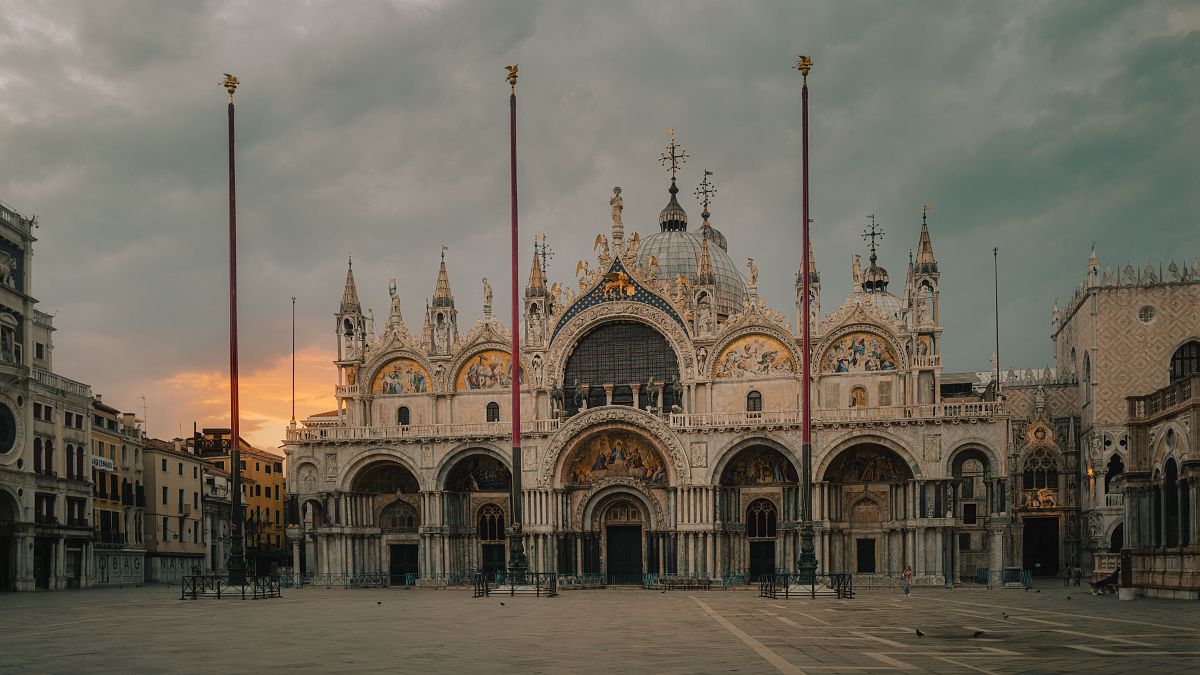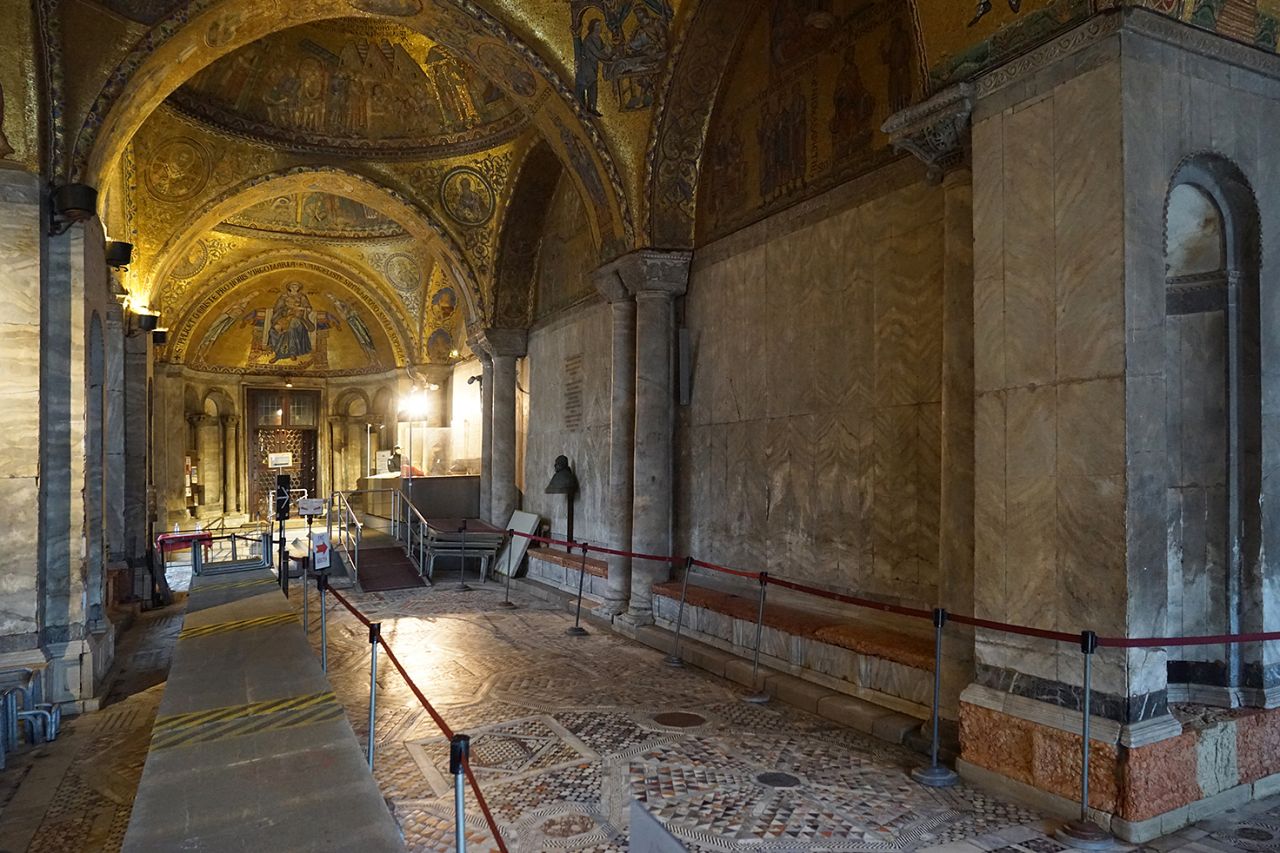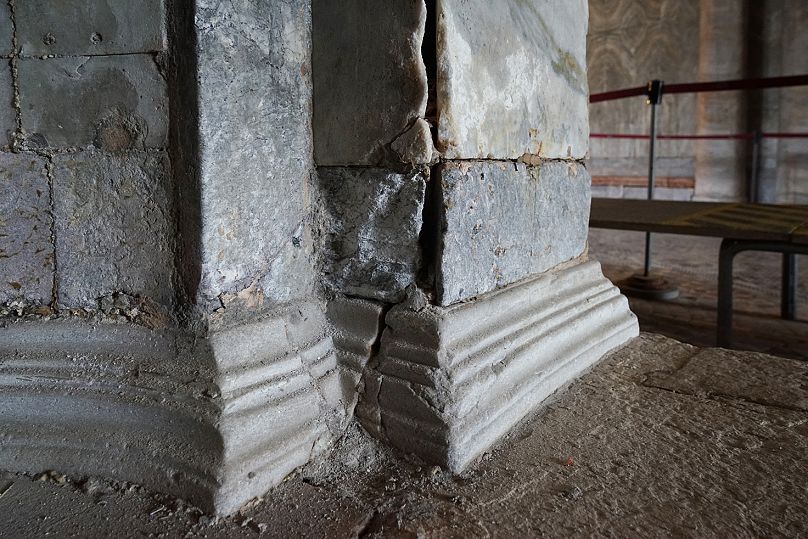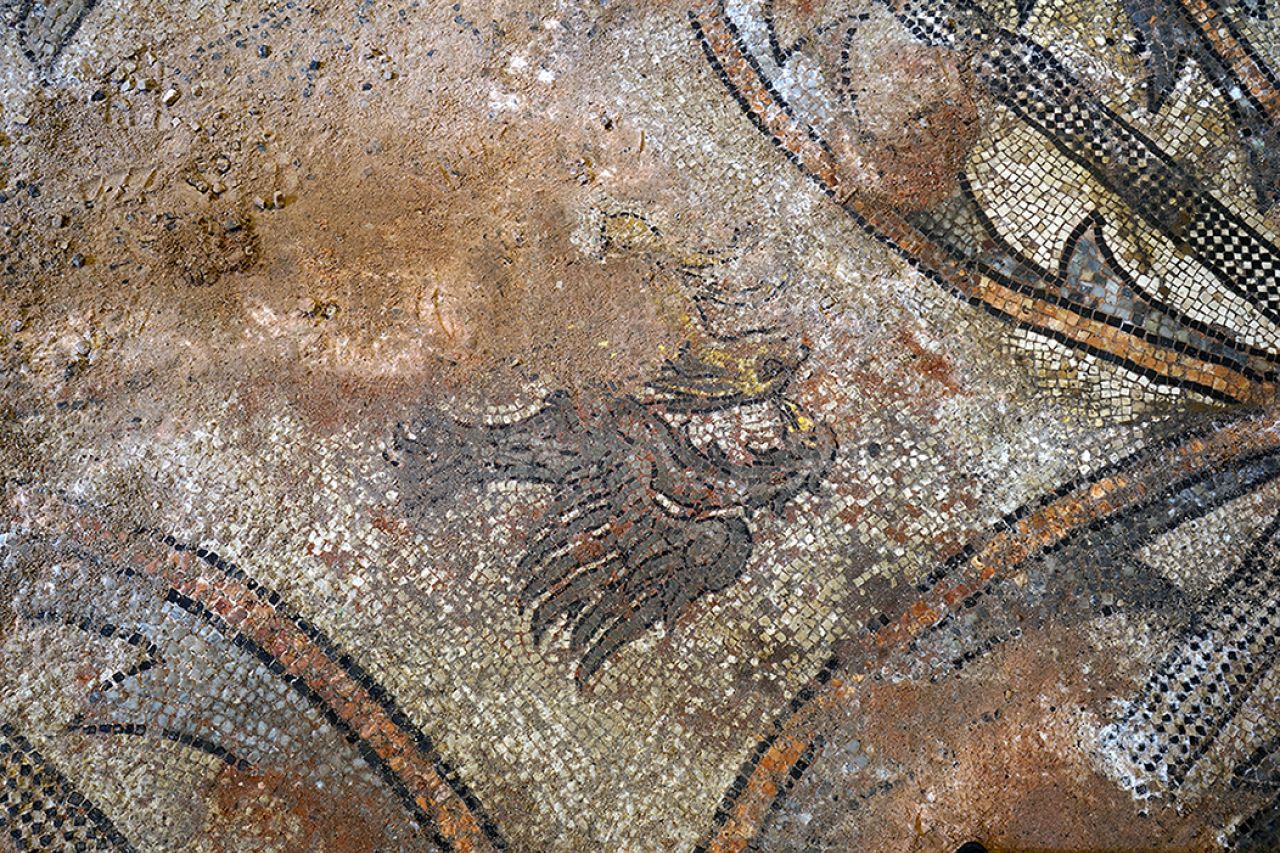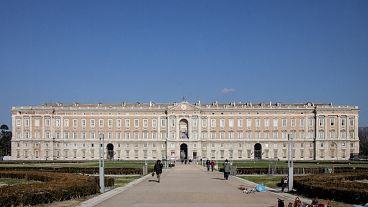Until recently, the 900-year-old church remained regularly at the mercy of the tides.
In the atrium of Venice’s St Mark’s Basilica, the red marble bases of ancient columns have been gnawed away.
Other plinths are fragmented so badly they must be held in place by makeshift straps.
Chunks are missing from the stone floor and the glittering gold mosaics on the walls are losing tiles.
These are signs of decades of water damage; until recently, the 900-year-old church remained regularly at the mercy of the tides.
Now, protective glass barriers and a €3.3 million restoration hope to return it to its former glory.
Flood water devastates St Mark’s Basilica
Imperilled by rising tides for decades, St Mark’s Basilica was dealt a devastating blow in 2019.
That year in November, Venice experienced the second worst flooding - or acqua alta - on record causing two deaths and hundreds of millions of euros worth of damage.
The fragile Byzantine basilica was inundated with salty water and irrevocably damaged.
Saltwater is particularly harmful as it leaves behind salt crystals in the masonry. These then expand, causing stones to crack and mosaics to drop off the walls.
Marble slabs in the atrium are particularly vulnerable as, during restoration works in the 19th century, they were removed and reattached with Portland cement.
“When in contact with water and sodium chlorine, this cement creates particularly aggressive results,” says head architect of the basilica, Mario Piana.
Glass barriers save St Mark’s Basilica from the tides
Despite the completion of the MOSE project of inflatable yellow parapets that rise up and block high tides, St Mark’s Basilica remains in danger.
The atrium of the church lies at just 65 centimetres above sea level, making it the lowest lying point of the city.
The MOSE barriers are only raised when a high tide of 110 centimetres or more is predicted, so until recently the basilica was still regularly flooded - and increasingly so amid the effects of climate change and rising sea levels.
The first stage of the project to protect St Mark’s Basilica from the rising tides was completed last December.
It saw glass barriers installed around the perimeter, sunk into the ground and rising around one metre tall.
These are now successfully preventing water from seeping into the church, even when the square outside is underwater.
St Mark’s Basilica to get a €3.3 million restoration
Now, work is underway to repair and restore the flood-damaged elements thanks to a €3.3 million grant from the Culture Ministry.
"We are aware that we are using public resources for the good of humanity," said Bruno Barel, one of the seven procuratori who oversee the historic preservation of St. Mark’s.
The Venetian company carrying out the restoration said it will complete the works in two years and four months.
During the presentation of the project, Piana explained that the interventions will be focused on the stone cladding of the atrium where saline crystallisation has been particularly damaging.
This will involve removing marble slabs and ‘desalinating’ them by immersion in deionised water.
In areas where the stones are impossible to remove, the same procedure will be carried out using repeated compresses.
The mosaic floor will also be repaired by analysing photographic and archival material from the beginning of the last century.
Work will also take place on the chapel of the Blessed Sacrament in the south transept of the basilica, which was submerged during the high tide of November 2019.
This caused the bedding beneath the mosaic to swell, with around two metres squared badly damaged.
These 12th-13th century mosaic decorations on the base of the chapel’s altar will undergo restoration by removing the damaged mortar, neutralising the salt present in the tiles and relaying with a waterproof base.
“The relaying of these sections will respect the undulations and inclinations of the initial surfaces,” assures Piana.
